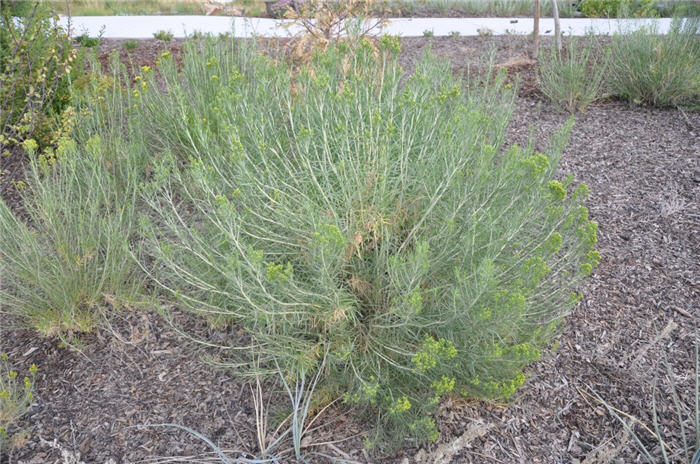| Botanical Name: Krascheninnikovia lanata | |
| Common Name: Winterfat |

-
Anatomy
-
Culture
-
Design
Plant Type
Shrub
Height Range
1-3'
Flower Color
White
Flower Season
Spring
Leaf Color
Grey Green, Silver, White
Bark Color
n/a
Fruit Color
White
Fruit Season
Winter, Fall
Sun
Full
Water
Very Low, Low
Growth Rate
Moderate
Soil Type
Sandy, Clay, Loam, Rocky, Unparticular
Soil Condition
Average, Poor, Well-drained, Dry
Soil pH
Neutral, Basic
Adverse Factors
n/a
Design Styles
Meadow, Mediterranean, Ranch, Native Garden
Accenting Features
Unusual Foliage
Seasonal Interest
Winter, Summer, Fall
Location Uses
Background, Shrub Border, Foundation, With Rocks
Special Uses
Cut Flowers, Erosion Control, Filler, Mass Planting, Naturalizing
Attracts Wildlife
Birds, Wildlife
Information by: Stephanie Duer
Photographer: Mountain States Nursery
Photographer: Mountain States Nursery
-
Description
-
Notes
Extremely hardy deciduous shrub to 2 to 3 feet tall and wide. Though the foliage may at first appear somewhat similar to the desert sages, the flowers are very different, forming spires of woolly white flowers in late spring to early summer. Hairy fruits provide considerable winter interest and attract birds. The dried seedheads are also useful in floral arrangements. A Utah native. Also listed as Ceratoides lantana.
Grow in full sun and well drained soils; will grow in sandy to gravelly soils to average garden soils. Very xeric and very alkaline tolerant. Cut back in late winter to early spring for a tidy appearance. Hardy to -30f